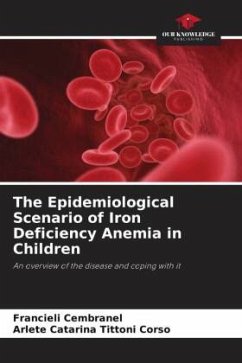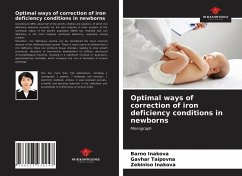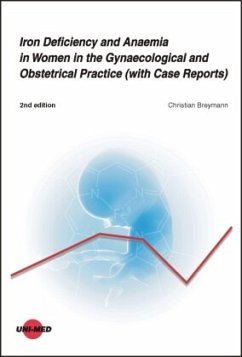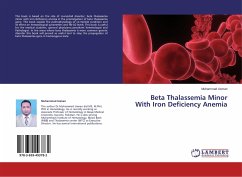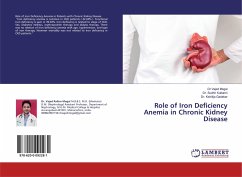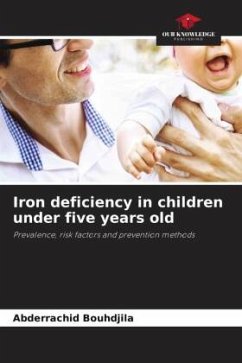
Incidence of Iron Deficiency Anemia Among Infants
Iron Deficiency Anemia Among Infants at Khartoum state (Sudan)
Versandkostenfrei!
Versandfertig in 6-10 Tagen
53,99 €
inkl. MwSt.

PAYBACK Punkte
27 °P sammeln!
Anemia is a major health problem. It is a case of insufficient hemoglobin. 25% of the world population is affected by iron deficiency anemia, especially infants, preschool children, pregnant women and nurturing mothers. Iron deficiency is associated with the imbalance between iron intake, utilization and loss. This may lead to premature death, prenatal mortality, pre-term delivery, low birth weight, and fetal impairment. 20% of maternal deaths are because of iron deficiency. Anemia include decreased blood volume, in which, hypovolemia is caused by bleeding and hypoxia. This work is across-sect...
Anemia is a major health problem. It is a case of insufficient hemoglobin. 25% of the world population is affected by iron deficiency anemia, especially infants, preschool children, pregnant women and nurturing mothers. Iron deficiency is associated with the imbalance between iron intake, utilization and loss. This may lead to premature death, prenatal mortality, pre-term delivery, low birth weight, and fetal impairment. 20% of maternal deaths are because of iron deficiency. Anemia include decreased blood volume, in which, hypovolemia is caused by bleeding and hypoxia. This work is across-sectional descriptive and analytical study, conducted to determine the incidence of iron deficiency anemia among infants in three Sudanese children hospitals. 500 sick and 100 control infants aging between (2 to 24 months) were studied. All the infants under study were found to be anemic. The blood films show microcytic hypochromic, pokylocytosis, target and pencil cells. The incidence of iron deficiency anemia was (23.6%) in the three children hospitals. Iron deficiency anemia was 44% in breast fed and 56% in fortified fed infants.



